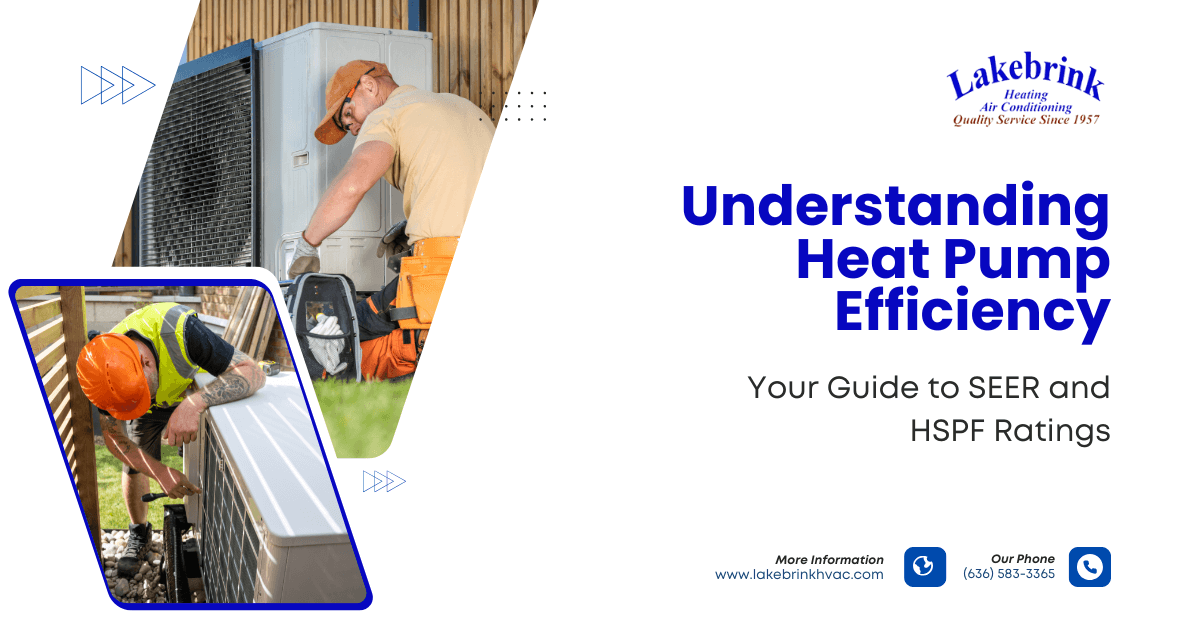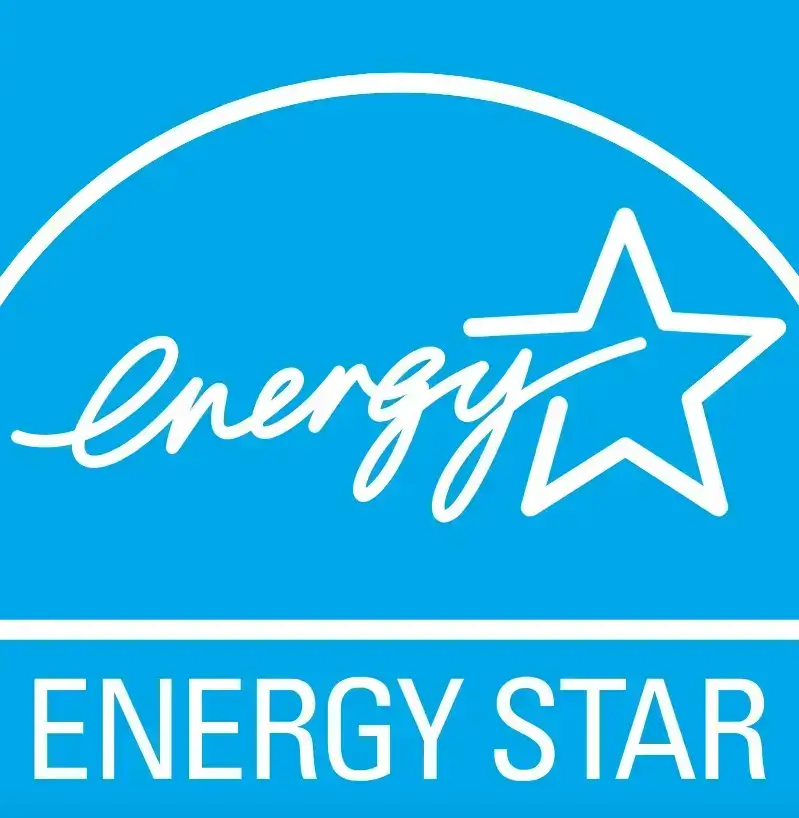Understanding Heat Pump Efficiency: Your Guide to SEER and HSPF Ratings
Understanding heat pump efficiency is essential for homeowners looking to save money on energy bills and reduce environmental impact. With rising energy costs and an increased focus on sustainable living, the details hidden behind SEER (Seasonal Energy Efficiency Ratio) and HSPF (Heating Seasonal Performance Factor) ratings have become crucial factors in choosing the right heat pump for your home. Many homeowners find themselves puzzled by technical terms and misleading unit conversions, which can lead to poor decisions and unexpected expenses.
In today’s discussion, we address the challenges of inefficient heat pumps, break down the jargon surrounding efficiency ratings, and provide practical advice that can help you make informed decisions to improve your home’s overall energy performance. Whether you are upgrading an aging system or installing a new heat pump, understanding these concepts is vital.
The Hidden Cost of Inefficient Heat Pumps
Inefficient heat pumps can silently drain your budget. Studies from the U.S. Department of Energy indicate that using outdated or improperly rated systems can increase annual energy costs significantly. In fact, inefficient systems have been known to inflate energy bills by as much as 30% compared to properly rated models. For example, a report from the U.S. Department of Energy highlights that upgrading to a model with a high SEER and HSPF rating may drastically reduce your energy consumption over time.
The financial burden extends beyond energy bills. Homeowners also face operational challenges when a system does not perform as expected during peak usage times. High energy consumption often correlates with excessive wear and tear on the system, leading to more frequent repairs or early replacement. Alongside higher utility costs, the environmental impact of increased energy use cannot be overlooked. As the demand for power grows, inefficient heat pumps contribute to more carbon emissions, affecting both your wallet and the planet.
Even a slight improvement in efficiency can lead to substantial long-term savings. However, understanding how to measure and compare these improvements is where SEER and HSPF ratings come into play.
SEER and HSPF: The Essential Efficiency Markers
Central to gauging a heat pump’s performance, SEER and HSPF are the two key ratings that guide both consumers and professionals. SEER, which stands for Seasonal Energy Efficiency Ratio, measures the cooling output during the summer months relative to the energy used. On the other hand, HSPF evaluates the heating efficiency over the heating season, providing insight into the system’s performance during colder periods.
These ratings not only offer a way to compare different heat pump models but also help in determining the potential energy savings over the unit’s lifespan. A model with higher SEER and HSPF ratings is likely to use energy more efficiently, leading to lower operational costs. When researching your options, it is essential to examine these markers closely, as they directly reflect the system’s ability to convert energy into comfort.
SEER and HSPF Explained: Cutting Through the Jargon
Understanding the technical aspects behind the numbers can be complex, but breaking them down reveals important insights. The SEER rating, for example, is calculated over an entire cooling season and represents the ratio of cooling output (measured in BTUs) to the electricity used (in watt-hours). Essentially, a higher SEER value means that the heat pump delivers more cooling for each unit of energy consumed.
Similarly, the HSPF rating measures heating efficiency. It compares the total space heating required (in BTUs) to the electricity consumed over a heating season. Like SEER, a higher HSPF suggests that the system is more efficient in converting energy to heat. These ratings not only allow you to compare systems but also help manufacturers to drive innovation in energy efficiency.
By understanding these two ratings, you get a clearer picture of a system’s overall performance. Many consumers mistakenly equate a higher rating only with new technology, but it is the combination of SEER and HSPF that provides an accurate measure of year-round efficiency.
Conversion Confusion: Making Sense of Units and Metrics
When browsing specifications and comparing models, you might stumble upon various units and metrics that can lead to confusion. For instance, while watts, BTUs, and kilowatts are all measures related to energy transfer and consumption, they are not always directly comparable at first glance. It is important to focus on the agreed-upon standards that underpin SEER and HSPF calculations.
Unit conversion errors can further complicate matters. Many homeowners are exposed to online calculators that may not account for seasonal variations or local climate differences when rendering efficiency data. This discrepancy can lead to underestimating or overestimating a system’s performance.
The key is to refer to the technical documentation provided by manufacturers and third-party evaluations. Additionally, comprehensive energy guides available on websites like the U.S. Department of Energy provide detailed breakdowns of efficiency ratings and conversion methods. These resources help demystify the numbers and offer a clearer understanding of what to expect from your heat pump.
Case Studies of Efficiency Impact on Energy Bills
Real-life examples can offer valuable insights into how SEER and HSPF ratings translate into everyday savings. In one detailed case study from the Midwest, a homeowner who upgraded from a system with a SEER of 10 and HSPF of 7 to a model boasting ratings of 16 and 9 respectively saw a reduction of nearly 25% on their monthly energy bills. This case, detailed in a recent Consumer Reports article, illustrates how the right choices in heat pump technology can have an immediate financial impact.
Another example involves a community project in a small town in Minnesota, where upgrading the local housing stock with modern heat pump systems led to significant energy savings during the harsh winter months. The project, which involved detailed studies and multiple homeowner interviews, confirmed that homes equipped with higher efficiency systems not only consumed less energy but also provided more consistent indoor temperatures. Such empirical evidence reinforces the importance of focusing on SEER and HSPF ratings when planning an upgrade.
These examples serve as real-life validation of the benefits of investing in quality heat pump systems. By comparing specific numerical benefits and cost savings, homeowners can gain confidence in the idea that even a modest improvement in efficiency ratings can yield meaningful long-term returns.
Choosing the Right Rating: Tailoring Your Choice to Your Needs
Every home has unique requirements based on its climate, insulation, and design. When selecting a heat pump, it is important to analyze your home’s specific needs and compare them against the available SEER and HSPF ratings. For instance, homeowners in warmer regions might benefit from a higher SEER rating since cooling demands dominate, while those in colder climates should focus on HSPF performance.
Begin by assessing the current performance of your heating and cooling systems. Use available tools such as home energy audit checklists to establish a baseline. With this information, you can then review product specifications and understand how different systems will perform under your local conditions. Consider factors like room layout, existing insulation, and local weather patterns when making your decision.
An informed approach involves combining professional assessments with your own research. Written guides and online resources can clarify the technical details, while energy calculators can offer an estimate of future savings. By tailoring your selection process to your specific situation, you ensure that you choose a heat pump that is both efficient and appropriate for your home environment.
Making Informed Decisions with Lakebrink HVAC
For many homeowners, navigating the technicalities of SEER and HSPF ratings can be overwhelming. This is where professional guidance becomes important. Lakebrink HVAC has built a reputation for providing expert consultations that help homeowners understand the nuances of heat pump efficiency. Their team can evaluate your existing system, suggest appropriate upgrades, and align your choices with the overall energy profile of your home.
By working with experienced professionals like those at Lakebrink HVAC, you get tailored advice that takes into account both your immediate needs and long-term energy savings. They provide not only technical know-how but also insights into the latest technological advancements. Their approach is grounded in practical experience, ensuring you make choices that stand the test of time.
Homeowners who have engaged with Lakebrink HVAC report increased confidence in their investments, driven by an improved understanding of rating systems and clear guidance on installation and maintenance strategies. This expert support is invaluable in ensuring that the system you select truly meets your home’s heating and cooling requirements.
Technologies and Innovations in Improving SEER and HSPF
Advancements in technology continue to push the boundaries of energy efficiency in heating and cooling systems. Modern heat pumps now incorporate variable-speed compressors, smart sensors, and adaptive controls that optimize performance throughout the year. These innovations are not just technical achievements—they translate into tangible energy savings and more consistent comfort levels in your home.
Manufacturers are constantly refining the algorithms behind SEER and HSPF calculations, integrating real-time data to tweak performance. Some newer models now include features that allow remote monitoring and adjustments through smartphone apps. Such innovations ensure that your heat pump maintains optimal operation, adapting to shifts in indoor and outdoor temperatures.
Adopting these state-of-the-art systems offers dual benefits: enhanced yield and the potential to integrate with other smart home systems. For instance, combining a heat pump with a smart thermostat can significantly streamline energy management, ensuring that your heating and cooling are as efficient as possible. By staying informed about the latest technological advances, homeowners can select systems that not only promise higher ratings on paper but also deliver measurable improvements in daily comfort and cost savings.
Turning Knowledge into Power: Steps to Boost Home Efficiency
Armed with clear information about SEER and HSPF, you now have the tools needed to boost your home’s efficiency. Start by monitoring your current energy usage to establish a performance baseline. Many local utilities offer energy tracking programs and online dashboards that help you visualize consumption patterns.
Once you understand your baseline, consider the following steps:
- Evaluate your current insulation and sealing practices. Even the most efficient heat pump will underperform in a poorly insulated home.
- Review your heat pump’s specifications and compare them with models that offer higher SEER and HSPF ratings.
- Consult with a professional to assess your home’s specific needs. Expert advice can ensure that your chosen system aligns with both your energy goals and your living habits.
- Look into complementary technologies, such as smart thermostats and energy management systems, which can further enhance efficiency.
These practical steps provide a roadmap to maximizing your home’s performance. By taking the time to understand and implement these strategies, you are not only optimizing your energy usage but also creating a more sustainable living environment.
A Guide to Maximize Savings with Your Heat Pump
Maintaining your heat pump is equally important as choosing the right one. Regular maintenance ensures that the SEER and HSPF ratings you rely on remain effective over time. Here are some tips to help you maintain your system’s efficiency:
- Schedule routine check-ups and cleaning to prevent dust and debris buildup that can impair system performance.
- Replace filters regularly and monitor for any unusual sounds or fluctuations in indoor temperature.
- Keep an eye on refrigerant levels and ensure that any lubrication requirements are met promptly.
- Set up periodic system evaluations.
These measures may seem basic, but they are instrumental in keeping your system operating at peak efficiency. By adhering to a regular maintenance schedule, you can extend the lifespan of your heat pump, prevent performance drops, and ultimately save on energy costs over the long term.
Frequently Asked Questions
What do SEER and HSPF ratings mean for my heat pump’s efficiency?
SEER (Seasonal Energy Efficiency Ratio) measures the cooling efficiency of a heat pump during the cooling season, while HSPF (Heating Seasonal Performance Factor) evaluates heating efficiency over the heating season. A higher rating in either indicates a more efficient system, which means less energy consumption and lower utility bills.
How do I know which rating is more important for my home?
The importance of SEER versus HSPF depends primarily on your local climate and household usage. For those in warmer climates with heavy cooling demands, a higher SEER rating is essential. In contrast, households in colder regions should prioritize HSPF to enhance heating performance and lower winter energy costs.
Are there real-life examples showing the impact of choosing a high-rated heat pump?
Yes, numerous case studies have demonstrated significant energy savings. One study from the Midwest showed that upgrading to a heat pump with superior SEER and HSPF ratings led to a reduction in monthly energy bills by up to 25%. Detailed examples can be found in reports from reliable sources such as Consumer Reports.
How can I maintain the efficiency of my heat pump once installed?
Regular maintenance is key. This includes cleaning or replacing filters, scheduling professional system evaluations, and monitoring the unit for any irregular performance. Maintaining your heat pump ensures that it continues to operate at its rated efficiency and helps avoid costly repairs.
Can technological advancements really improve my heat pump’s performance?
Yes, advanced features like variable-speed compressors, smart sensors, and remote monitoring have revolutionized heat pump performance. These features help the system adapt to real-time changes in outdoor and indoor conditions, ensuring optimal energy efficiency throughout the year.
Conclusion
Understanding heat pump efficiency through SEER and HSPF ratings provides a clear pathway for homeowners to achieve both cost savings and environmental benefits. The hidden costs of inefficient systems, combined with the technical complexity of efficiency ratings, can be daunting. However, by breaking down the terms, examining real-life case studies, and taking practical steps toward improvement, you can make decisions that bring long-term benefits to your home’s energy consumption.
Invest in your home’s efficiency by taking a closer look at your current system, considering professional consultations, and staying informed about evolving technologies. Remember that every incremental improvement in SEER and HSPF not only saves money but also bolsters the sustainability of your living environment.
If you’re feeling overwhelmed by the specifics or need tailored advice, consider reaching out to trusted partners like Lakebrink HVAC, who offer consultations designed to guide you through the process. Their expertise can help align your choices with your specific needs, ensuring that the heat pump you install truly delivers the performance you expect.
Take charge of your home’s energy future today. Start by assessing your current system performance, doing your research on efficiency ratings, and setting a plan for regular maintenance. With careful planning and the right professional guidance, you can transform your home into a more efficient, comfortable, and cost-effective space.
For additional insights on home energy efficiency and comprehensive maintenance tips, visit our Home Efficiency Guide or explore related resources on our website. Your journey toward a more energy-efficient home begins with informed decisions and practical strategies that bring real, measurable benefits.
By taking the time to understand heat pump efficiency and implementing the strategies discussed in this guide, you empower yourself with the knowledge needed to reduce energy consumption and lower household costs. Modern heat pump technology, combined with regular upkeep and strategic consultations, can significantly change how your home performs in any season. Don’t wait for your energy bills to rise further—start taking proactive steps today to create a more sustainable and cost-effective living environment.
With this comprehensive guide in hand, you now have the insights required to navigate the complexities of SEER and HSPF ratings. These crucial markers not only help you make the right purchases but also pave the way for long-term savings and a smaller carbon footprint. Whether you are upgrading an existing system or planning a new installation, take action by assessing your current setup, comparing efficiency ratings, and seeking professional advice when necessary.
If you’re ready to enhance your home’s energy performance and enjoy lower utility bills, consider scheduling a consultation to explore the best options available. Every well-informed decision brings you one step closer to a smarter, more efficient home. Your commitment to understanding and improving heat pump efficiency reflects a proactive approach to home maintenance that reaps both financial and environmental benefits. Embrace this opportunity to make a difference in your daily life, and let your home be a testament to efficiency and responsible energy use.
No matter where you stand on your journey toward energy efficiency, the key lies in education, careful evaluation, and consistent maintenance. Embrace these actionable strategies, and watch how informed decisions can lead to a more comfortable home and a healthier planet.










